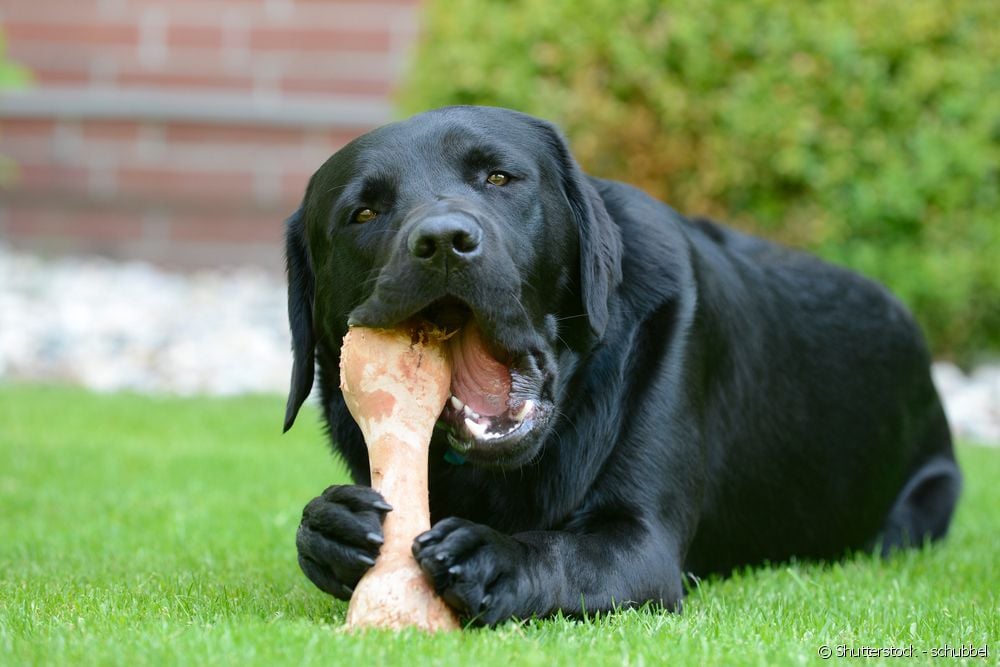Is dog bone bad for you? Find out which type is best to give to your dog

Table of contents
Giving bones to dogs is a habit that can help them relax, avoid tartar, but did you know that not all materials are safe and healthy for them? Despite being sources of protein, bones can shatter when bitten and cause intestinal damage and even death of your dog by choking or damage to internal organs. But calm down! Not all bones are dangerous and there are types that are safe for dogs.can be used as dog treats, so let's find out which ones are allowed for your dog.
Which bones can be used as dog treats
- Ox bone In addition to being tasty, beef bones can provide a large amount of cartilage and even meat. Another benefit is mouth cleaning. Although indicated, always keep an eye out while offering bones to your dog;
- Pig bone If you are going to offer your dog pork bones, prefer the larger ones such as knee and femur bones. This way, you keep away the risks of choking and continue to offer all the benefits of bones such as cartilage and the relaxation that the habit of gnawing causes;
- Snacks suitable for gnawing In addition to natural bones, you can also find dog treats on the market that are shaped like bones and can be gnawed on by dogs for hours (or minutes, in the case of the greediest). Made mainly of cereals and meats, these sticks even help maintain your dog's oral hygiene.
Main precautions when offering bones to your dog

- Keep an eye out: as much as they are indicated, dogs can choke. It is important to act quickly at these times;
- Don't offer chicken bones: chicken bones are very fragile, small and can become sharp when chewed. This can cause sores in your dog's mouth and internal organs;
- Do not offer leather bone: when chewed, the material of this bone softens and becomes gelatinous, and can release pieces that can cause choking and even stick to the dog's internal organs;
- Don't leave the bones for long periods with the dog: bones are very hard and tough. Although pleasurable, after a long period they can strain the jaw too much;
- Don't offer bones left over from the barbecue: in addition to the salt present, barbecued bones can also become brittle and, when chewed, become sharp and cause chicken-like injuries.
House Paws Alert As we mentioned above, even freed bones can be dangerous for any breed or size of dog. When chewed, the pieces - of any kind - can choke and/or hurt the animals. Whenever you offer the treats, supervise your dog.
See_also: Dog snout: find out all about the anatomy, health and curiosities about the canine sense of smell
